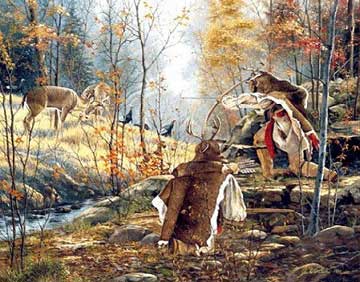 It is very hard in archaeology, particularly in prehistory, to point to an exact date when something started or finished. The best we can do is give a date for the earliest known example and make a vague statement about when a particular artefact was in common use. This makes descriptions of different societies difficult and often a bit “samey” and “beige.”
It is very hard in archaeology, particularly in prehistory, to point to an exact date when something started or finished. The best we can do is give a date for the earliest known example and make a vague statement about when a particular artefact was in common use. This makes descriptions of different societies difficult and often a bit “samey” and “beige.”
The Mesolithic is a very powerful example of this. As prehistorians, we theorise that important social changes are going on with different technologies being exploited and changes in economy and lifestyle. But the hard evidence is often contradictory.
Take the use of arrows and bows. The first stone point that has been interpreted as an arrowhead comes from Africa and is dated to approximately 64,000 years ago. However, it has not so far been possible to test whether or not it was ever fired from a bow. In the European Palaeolithic, there are numerous small flint points that could be used as arrowheads, but could also have other uses. Thrown arrows, sometimes called darts, are well documented in Europe up to the late 17th century AD. So finding arrowheads alone is not evidence of the use of bows. For that, you need to find the actual bows, and that is much more difficult because the material they are made from (wood) doesn’t survive the passing of millennia, except under very rare circumstances.
For wood to survive, it generally needs to be waterlogged. Waterlogged sites don’t come up very often, but when they do they really hit the news. Things survive that archaeologists don’t often get to see. The earliest bow fragments found in Europe were from Germany and date to the late Palaeolithic or early Mesolithic. Complete bows are late Mesolithic and early Neolithic and have been found in Holland and Scandinavia.
On the surface, this could lead us to say that bows and arrows were introduced in the Mesolithic period, and in times past historians and antiquarians would talk in terms of the bow being invented in Africa and carried to Europe through migration as if the bow was part of human evolution and the bow people were out competing the less advanced spear people. This gives a false impression.
What we actually know is that light projectiles such as darts or arrows have been around since at least the late Palaeolithic. Bows also existed in the late Palaeolithic, but more survive from the Mesolithic, suggesting that they were more common. So how did this happen?
Hunting techniques are not the same for all forms of prey or all types of landscape. If you are hunting a mammoth across arctic tundra a bow may not be the most useful tool. I’m not sure what would happen if you shot an arrow at a fully grown mammoth, but I suspect it would not be enough to injure the animal to any significant degree. A heavy spear, thrown with the full extension of the arm, or even thrust into a mammoth would cause significant injury. The animal would flee, but would be slowed and if relentlessly pursued it would succumb to its injuries and dies.
Trying to throw a spear in woodland is difficult, trees and branches tend to get in the way. Trying to thrust a spear at a deer requires an act of ambush and more speed than most can manage. But the bow and arrow is perfect for the job. The power of the bow is less than a thrown spear, but against the smaller animal, it is sufficient. The bow can store the energy and the hunter can take time to aim and release at the best moment. Far more effective.
In the Mesolithic period, we even have evidence that the hunters were setting up ambush sites by felling trees and creating small clearings. These would have had browse that was attractive to the prey and limited the number of entrances and exits. The result would be an increased number of targets and more opportunities to strike. Not quite shooting fish in a barrel, but a step in that direction.
So when we see, as we do in Lincolnshire, the changes in flint implements found from the Palaeolithic to the Mesolithic; we are not seeing the adoption of new technology as such, but the preference of a particular existing technology to suit the landscape that our ancestors were living in.
Over time, these changes in patterns of survival became the basis of a new form of subsistence and the dawn of a new age.
